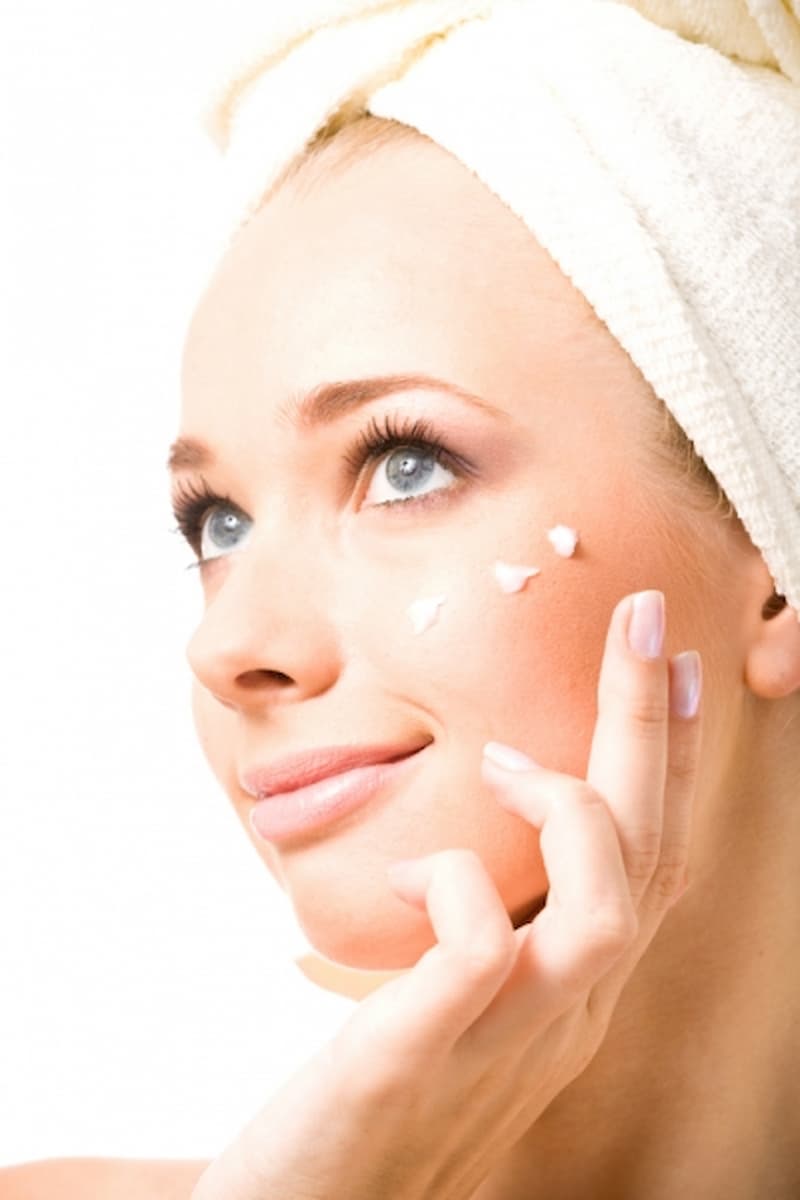
The skin around your eyes is thinner and more delicate than the rest of your face, making it more prone to wrinkles and other visible signs of ageing. Exposure to UV radiation from the sun, smoking, stress, hormonal changes and the natural deterioration of the collagen and elastin in our skin, leads to the permanent wrinkles, bags and dark circles that develop around the eye.
The use of cosmetics has accelerated dramatically in the 20th century, with the commercial marketing of an increasingly diverse array of products. These include anti-ageing and anti-wrinkle creams for the face and eye area. Synthetic, chemical-based cosmetics are increasingly linked to allergies and skin conditions such as eczema, acne, dermatitis and psoriasis. This has led to an increased demand for naturally derived products, usually identified by an organic or natural skincare label.
What is in Eye Cream?
Topical face creams are a mixture of chemicals, typically an emulsion i.e. a mixture of oil and water. Active ingredients (natural or synthetic substances) are responsible for the action of the product. An antioxidant, for example, is an active ingredient, whereas inactive ingredients, such as a base oil, aid in the delivery of active ingredients to the skin. There are a plethora of products on the market, many with firming, anti-wrinkle or anti-ageing claims. An effective eye cream should not add unnecessary oils to the skin and allow your skin to breathe.
Common ingredients in commercial products include:
- Retinol (vitamin A) - a firming agent, side effects include sun sensitivity
- Alpha hydroxy acids - an exfoliant, with side effects that include skin sensitivity
- Collagen - a very common firming agent, though it cannot be absorbed by the skin
- Caffeine - a firming agent
- Copper - a firming agent
Benefits of Eye Creams
Eye creams should be a key component in your skincare regimen if you want to maintain healthy skin and prevent free radical damage that causes premature ageing. Many women who use eye creams find that their eye puffiness, dark circles, and the frown lines between their eyes diminish over time when they regularly apply the cream every day. Here are the 7 most important benefits of using an eye cream:
- Prevents eye wrinkles because its key ingredients contain anti-ageing properties that improve the elasticity of the skin in the eye area, as well as keeping it hydrated.
- Prevents eye bags as it contains caffeine which can help reduce undereye puffiness by stimulating blood flow underneath the skin.
- Keeps eye area moist as eye creams are usually formulated with humectants that helps lock in moisture that your skin needs to protect it from dryness, irritation and the appearance of lines caused by dehydration.
- Improves skin tone, especially eye creams with vitamin C and green tea extracts in the ingredient list. They contain potent anti-inflammatory properties that may help you combat dark eye circles without causing irritation or breakouts on the surface of your skin.
- Promotes cell regeneration, leading to smooth skin and a younger-looking face.
- Helps improve circulation because its cooling effect helps stimulate blood flow to make you look more radiant.
- Firms the skin around the eyes, thanks to hyaluronic acid, one of the star ingredients in eye creams that retain moisture in the skin.
Read the Label of Eye Cream Products
The cosmetic industry offers a myriad of skincare products that are either worth including in your skincare routine or the culprit of skin irritation, so take the time to see what is in a product before you purchase it. One way to do this is to examine the ingredients on the product label. Some chemical ingredients are present in products because they are cheaper than natural eye cream. Be weary of products that have the following in the ingredient list:
- Mineral oil - this may appear as liquid paraffin, paraffin wax or petrolatum on a product label. This irritating ingredient clogs the pores and may cause acne and/or irritation due to the skin's inability to breathe. Paraffin is linked to carcinogens.
- Alcohol - this may appear as ethanol, ethyl alcohol, methanol, benzyl alcohol or isopropyl on a product label, and it causes excessive drying of the skin.
- Parabens - these are preservatives which can cause irritation/dermatitis. They are increasingly thought to be toxic and potentially harmful.
- Dioxane - a synthetic derivative of coconut, which is a peroxide, thought to be a carcinogenic and an eye irritant.
- Fragrances - an unnecessary irritant in an eye cream.
Beneficial Ingredients in Natural Eye Creams
Look for the following ingredients when shopping for your next eye cream. They are some of the many naturally sourced ingredients found in modern natural eye care products.
- Vitamin C - a powerful antioxidant
- Vitamin E - reduces the appearance of fine lines and dark circles around the eye
- Vitamin K - preliminary studies have found that this ingredient may help with dark circles around the eye
- Grapeseed oil - suitable for oily skin types, grapeseed extract is a natural antibiotic that contains antioxidant pigments that help to strengthen blood vessels
- Wheat germ oil - a versatile oil for general skin, high in many vitamins and minerals and often used as a natural preservative
- Horsetail extract - plumps up the skin, an alternative to collagen based products
- Avocado oil - is packed with omega-3 fatty acids that are suitable for dry skin types
- Sesame oil - a natural sunscreen
- Peanut oil - suitable for dry skin types
- Shea butter - a natural sunscreen
- Jojoba oil - suitable for oily skin as it regulates the oil glands
- Kojic acid - a bleaching agent to reduce dark circles, useful for dark circles around the eyes
- Bitter orange extract - a natural preservative that also contains gentle astringent properties
- Olive leaf extract - a natural preservative that rejuvenates skin and improves skin tone
- Wakame - an extract from Japanese sea kelp that is a skin detoxifier and toner
- Coenzyme Q10 - an antioxidant that is increasing in popularity. It is a small molecule that can easily penetrate skin cells to repair and regenerate skin tissue
How to Apply an Eye Cream
Once you have identified what you want out of an eye cream – moisturising, wrinkle reduction or dark circle reduction – and picked a product that matches your skin type, the next step is to learn how to use it properly. When applying eye cream, follow these important tips:
- Apply eye cream after your morning beauty routine or during your evening regimen before bedtime. Eye creams should be applied every 12 hours.
- According to skin experts, eye creams should be applied with gentle strokes, starting from the corner of the eye and working towards the temple (this is also good advice for preventing crow's feet). This helps maintain circulation and reduce puffiness.
- Eye creams should always be used after any astringents or toners as they can cause eye irritation. Be sure to apply this cream before your moisturiser or serum to ensure that the skin around your eyes absorbs it properly.
- Don't get the product into the eye, but rather focus the orbital bone (eye socket) and on top of the eyelid.
Source: VALICE Skin Care
Smart Skincare Tips
Always test a product on your wrist or the inside of your elbow (never use a new eye product on the skin surrounding the eyes) to determine whether it is receptive to the active ingredients. Any face product should be applied to a warm, cleansed, moisturised skin. Also, look for products that have genuine organic certification from a nationally or internationally recognized body. This will ensure the integrity of any ingredients contained in the product.
Prevention is the best cure! Wear sunblock, UV-protective sunglasses and a hat when you are outdoors to prevent sun damage to your skin. This, in combination with a balanced diet, which includes daily intake of fresh fruit and vegetables, will help your skin retain its healthy condition. Consult your local beauty therapist or a board-certified dermatologist if you have any skin concerns.
Article Resources
Originally published on Apr 14, 2009








